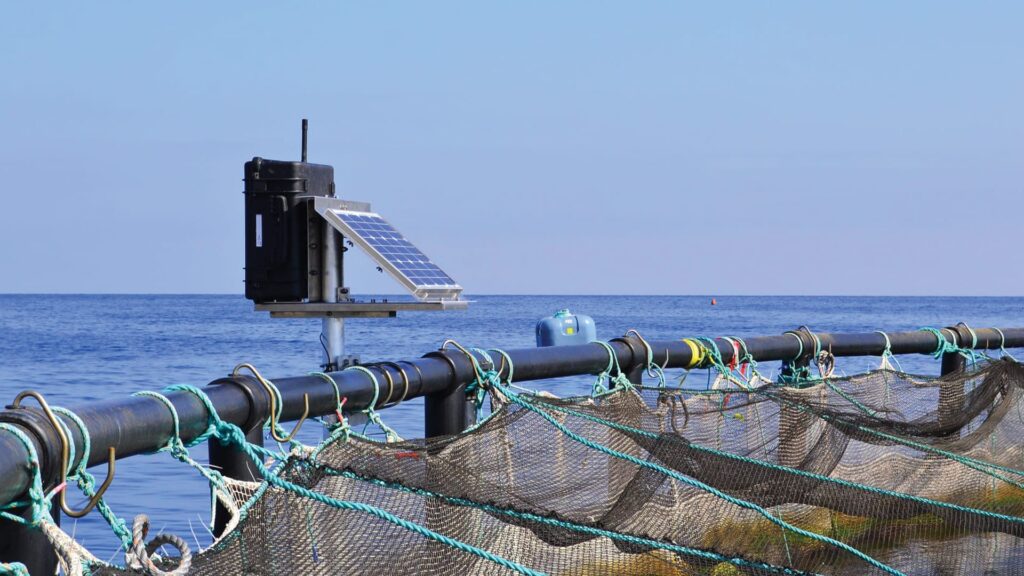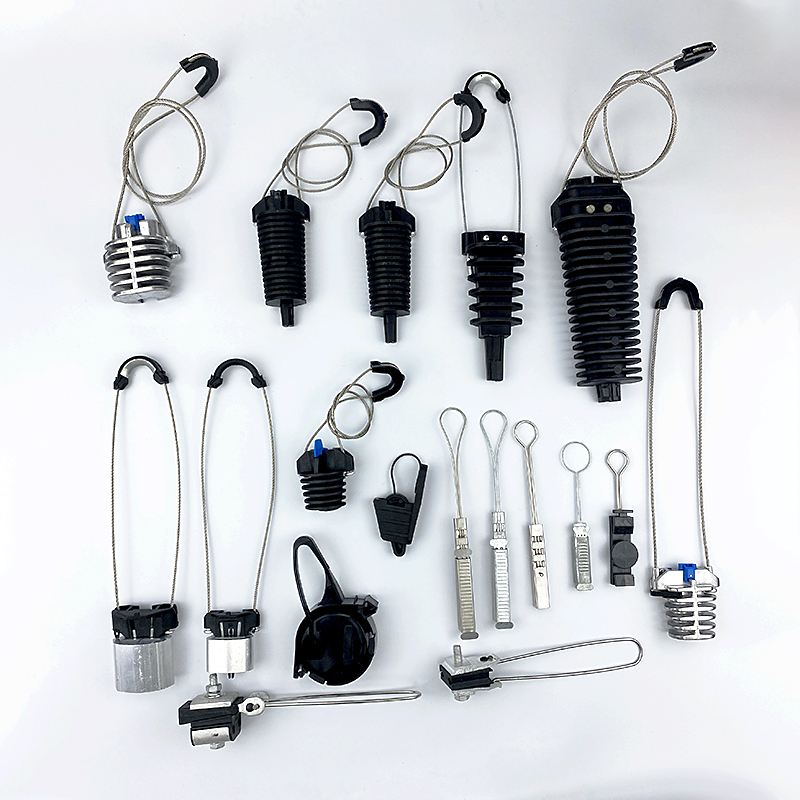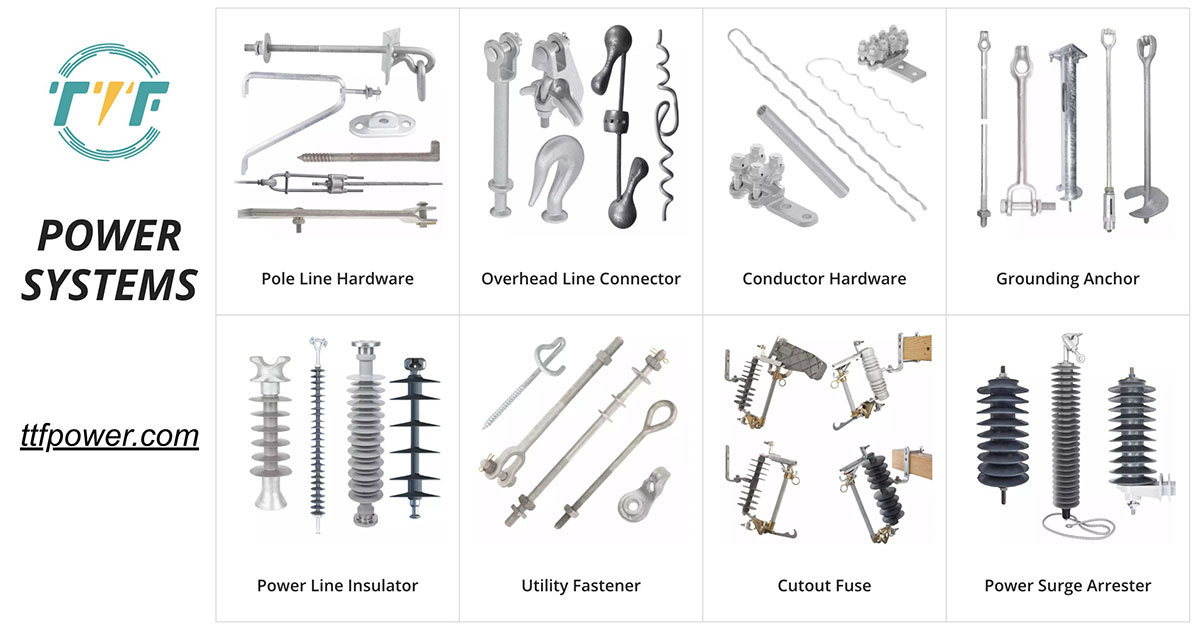
Ventisqueros, a salmon farming company based in Chile, built a fish farm that runs entirely on certified renewable energy. The company is located on Chiloé Island in the Los Lagos region, and its facility uses Tubildad’s solar and wind energy. Energy is transported via a 1.2-kilometer subsea cable buried up to 40 meters deep. Using renewable energy on site can help cut carbon dioxide emissions and oil usage by 180,000 liters. This project is consistent with Ventisqueros’ commitment to sustainability and complements their processing plant and offices, which currently use sustainable energy. It also emphasized the need for improved infrastructure and public-private collaboration to implement similar sustainable energy alternatives. A ball clevis is an important component used to electrify Chile’s fish farms. Drop wire clamps secure service drop wires that connect power from overhead utility lines. This ensures a stable and safe electricity supply.
Drop wire clamps anchor the service drop cables supporting electricity from solar PV, wind, and hybrid microgrids. This is crucial for aeration systems, water recirculation pumps, and monitoring sensors. They ensure reliable connections in harsh coastal environments. Most fish farms rely on off-grid or hybrid renewable energy, necessitating drop wire clamps. Drop wire clamps are made from galvanized steel, aluminum, or stainless steel to resist rust and degradation. This is crucial for Chilean aquaculture sites, which face saltwater corrosion, high winds, and heavy rainfall. It plays a crucial role in wind turbines, solar panel mounting systems, and micro-hydro power installations.
The role of drop wire clamps in renewable energy projects for fish farming
Drop wire clamps play a crucial role in securing and supporting electrical wiring for power distribution in offshore and land-based fish farms. The clamps ensure safe, efficient, and durable energy transmission in solar- and wind-powered fish farming. Drop wire clamps secure electrical wiring, enhance system reliability, and withstand harsh environmental conditions. Key application areas of drop wire clamps include aeration systems, water pumps, processing facilities, and monitoring sensors. Here are the common roles of drop wire clamps in Chilean aquaculture.

- Securing electrical wiring for renewable energy systems—a drop wire clamp secures electrical wiring from solar panels or wind turbines.
- Providing mechanical support—drop wire clamps ensure durability and long-term performance. This is crucial for Chile’s fish farms because they experience strong winds, saltwater exposure, and high humidity.
- Ensuring electrical reliability—proper wire management is crucial to prevent electrical faults, reduce power losses, and avoid accidents. Drop wire clamps secure electrical lines at optimal tension and reduce the risk of line sagging.
- Smart monitoring and automation—drop wire clamps help organize and protect low-voltage wiring for the automation systems. These ensure stable data transmission and power delivery.
The use of renewable energy in Chile’s fish farming industry
Renewable energy is critical to Chile’s fish farming business since it reduces environmental effects, lowers operational costs, and aligns with global sustainability trends. The use of clean energy is critical to making the sector more ecologically friendly. Renewable energy reduces emissions, decreases prices, improves sustainability credentials, and contributes to national climate targets. This is critical to establishing Chile as a global leader in sustainable aquaculture. TTF Power provides utility pole hardware fittings, transmission line accessories, and power line construction equipment. Here’s how renewable energy affects Chile’s fish farming business.

- Reducing carbon footprint—Chile’s salmon farming industry used to depend on diesel generators. Switching to renewable energy sources like solar, wind, and hydroelectric power reduces greenhouse gas emissions.
- Lowering energy costs—a high initial investment in renewable energy infrastructure leads to long-term cost savings. The abundant natural resources in Chile make it an ideal location for clean energy integration. Fish farms can stabilize energy costs and improve profit margins while reducing dependence on imported fuels.
- Enhancing sustainability—the seafood market is increasingly demanding sustainably farmed fish. Adopting renewable energy helps Chilean salmon producers get certifications that enhance their competitiveness in the export market. A ball clevis plays a crucial role in renewable energy transmission, structural stability, and efficiency.
- Improving environmental and social responsibility—fish farming has faced criticism for its impact on marine ecosystems. This includes water pollution, habitat destruction, and high energy use. Companies can operate off-grid farming centers with minimal ecological disturbance. Renewable projects create jobs and benefit local communities by promoting infrastructure development and technology transfer.
- Supporting government climate goals—the fish farming sector shifting to clean energy supports the national goals and aligns with broader efforts for climate change.
